Given the recent and ongoing seismic shocks to society from the pandemic, increased recognition of systemic inequities, and climate change, many philanthropies around the world, regardless of their form, experience, age and size, are facing the same question: how to better leverage their resources and capabilities to fulfil the promise of philanthropy to bring transformational change.

Funders are increasingly challenged to review and crystallize not only what they seek to accomplish and the kind of change they want to bring about, but also how they engage with talent, grantees, partners, and communities to create that change.
In response, Rockefeller Philanthropy Advisors (RPA), along with members of the Theory of the Foundation Learning Collaborative and dozens of funders and thought partners around the world, has developed Operating Archetypes, a new analytical mirror for reflection, alignment and action. A philanthropy’s Operating Archetype articulates what it seeks to achieve and how it deploys resources, capacities, and relationships to implement its vision and strategy.
Operating archetypes and core attributes
Based on extensive, multi-year global research, RPA has distilled eight Operating Archetypes:
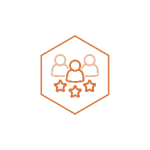 Talent Agency: Seeks out, strengthens, and promotes leading individual or organizational change agents who are closest to the issue, focusing more on their potential than on their programmatic goals or strategies.
Talent Agency: Seeks out, strengthens, and promotes leading individual or organizational change agents who are closest to the issue, focusing more on their potential than on their programmatic goals or strategies.
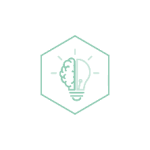 Think Tank: Applies its in-house expertise and research to design policy or systemic solutions, then introduces/ markets/socializes the approach to others, and finds implementers for those solutions.
Think Tank: Applies its in-house expertise and research to design policy or systemic solutions, then introduces/ markets/socializes the approach to others, and finds implementers for those solutions.
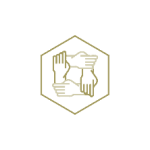 Campaign Manager: Pulls together a diverse set of players (funders, grantees, public sector, other larger system actors) to implement complex, time-intensive solutions that often cross sectors and traditional program areas. Often creates collaborative funding vehicles.
Campaign Manager: Pulls together a diverse set of players (funders, grantees, public sector, other larger system actors) to implement complex, time-intensive solutions that often cross sectors and traditional program areas. Often creates collaborative funding vehicles.
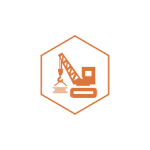 Field Builder: Launches or significantly strengthens institutions to fill a gap and create a robust, vibrant ecosystem needed to address a large challenge or to advance an issue area. Grows organizations and movements through steady, largely hands-off, support.
Field Builder: Launches or significantly strengthens institutions to fill a gap and create a robust, vibrant ecosystem needed to address a large challenge or to advance an issue area. Grows organizations and movements through steady, largely hands-off, support.
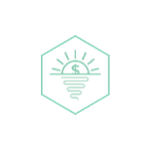 Venture Catalyst: Provides early, often unrestricted, funding to organizations or interventions that are new or have little proven track record. Venture Catalysts often use open competitions to source ideas, and rely on extensive networks of external experts to assess and formulate needs/ problems, goals, and strategies.
Venture Catalyst: Provides early, often unrestricted, funding to organizations or interventions that are new or have little proven track record. Venture Catalysts often use open competitions to source ideas, and rely on extensive networks of external experts to assess and formulate needs/ problems, goals, and strategies.
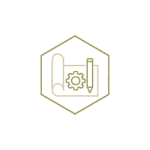 Designer: Leverages mainly internal expertise to design programs and approaches. Starting with an understanding of the context based on research and interaction, and with end users in mind, it prototypes, iterates and communicates to engage and influence end-users.
Designer: Leverages mainly internal expertise to design programs and approaches. Starting with an understanding of the context based on research and interaction, and with end users in mind, it prototypes, iterates and communicates to engage and influence end-users.
 Underwriter: An institutional or private funder who provides “big bet” support to major institutions (often cultural, medical or educational), civic groups or favored causes based on long-standing interests, values or personal experience. Financial support can be provided directly or through a range of trusted individuals.
Underwriter: An institutional or private funder who provides “big bet” support to major institutions (often cultural, medical or educational), civic groups or favored causes based on long-standing interests, values or personal experience. Financial support can be provided directly or through a range of trusted individuals.
 Sower: Provides a large number of grants across a diverse range of individual actors and institutions, often exercising responsive, flexible and participatory grantmaking, Sowers bet on the cumulative effect of this approach to seed wide-ranging change.
Sower: Provides a large number of grants across a diverse range of individual actors and institutions, often exercising responsive, flexible and participatory grantmaking, Sowers bet on the cumulative effect of this approach to seed wide-ranging change.
Each Operating Archetype is defined by several core attributes, including:
- Reason/Value Proposition. What do you do and why?
- Resources/Lead With. What is the primary asset—financial or non-financial – used to fulfil mission?
- Key Capabilities/Skills. What are your top skills, areas of expertise or capabilities?
- Equity. How do you include the voices most affected and share power to advance equity?
- Response/Activities. What do you do to tackle the problem and/or advance a solution?
- Primary Audience. For whom do you do it?
- Community Served (if different from primary audience). For whom do you do it?
- Relationships/Alliances. With whom do you do it?
- Impact Assessment: Where do you look for results?
The benefits of using operating archetypes
Operating Archetypes analysis can help funders better understand where they are (current state), where they want to go (aspirational state), how they compare to other players in the field, and their unique position in the ecosystem. Understanding its archetype can enable a philanthropy to:
- Better align existing resources, skills, and approaches and map potential gaps.
- Allowing for more thoughtful strategic pivots, including scaling up or spending down.
- Address issues of equity and inclusion.
- Lean into areas of strengths and work more effectively with partners.
Using the archetypes to address emerging themes
An introspective archetype analysis will also help philanthropies to develop an actionable roadmap for addressing themes that have gained increasing importance, such as:
 Equity and trust-based philanthropy
Equity and trust-based philanthropy
Although all archetypes can meaningfully pursue equity, the Talent Agency, Venture Catalyst and Sower types are especially well positioned to embrace trust-based philanthropy because they put those closest to the challenges being addressed at the center of their work. These archetypes also lead with similar capabilities, including relationships/networks, flexibility/agility, and knowledge, and maintain more hands-off approaches that allow grantees to envision and drive their own programming. For lasting effectiveness, these and other archetypes invest in communications as a way of enhancing transparency, trust, and more equitable power dynamics.
 Systems change
Systems change
In response to complex, interwoven, and escalating challenges, a growing number of funders leverage systems-oriented strategies. While most Operating Archetypes can incorporate systems approaches, Talent Agencies, Think Tanks, Campaign Managers, Field Builders and Sowers are by nature well-equipped to tackle wide-ranging systems change. To do so effectively, these archetypes lean into their internal expertise and knowledge, extensive networks, proximity to target audiences, convening power, capacity-building, and advocacy or communications abilities. For Designers and Underwriters wishing to contribute to systems change it is important to analyze what niche their capabilities can fill in the overall landscape.
 Assessing impact
Assessing impact
Measuring and demonstrating impact is central to all archetypes, although its expression may differ. For Campaign Managers and Think Tanks, assessing the impact of initiatives with specific, time-bound, tangible end products, this task may be straightforward. For other archetypes, including Field Builders, Designers, Talent Agencies, and Sowers, experimental funding decisions and “big bets” may create unexpected results that require a different type of goalpost for impact assessment. For archetypes that favor unrestricted funding such as Venture Catalyst and Sower, assessment models, frameworks and metrics can be codeveloped with grantees once their work is underway.
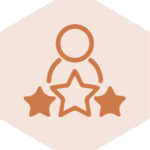 Talent and recruiting
Talent and recruiting
Despite some in the sector moving toward hiring generalist talent, many funders still use issue area expertise as the key criterion in recruiting, regardless of what skills the archetype demands for success. Instead, funders may want to consider their talent needs based on their archetype. For example, the Think Tank, Designer and Field Builder archetypes need specialists with deep issue expertise. In contrast, Campaign Managers and Talent Agencies may need a more general level of knowledge but a higher level of expertise in building networks and coalitions.
Conclusion
Intentional and thoughtful Operating Archetype analysis cannot only help funders better understand how they achieve and evaluate impact but provide funders with a robust framework for engaging in intentional analysis of key operational implications for their work, including how to prioritize resources and capabilities. As philanthropies apply this instrument, their insights will contribute to creating more thoughtful, effective and equitable philanthropy, advancing best practices and yielding more powerful impact for our sector as a whole.
Olga Tarasov is Director of Knowledge Development at Rockefeller Philanthropy Advisors.



Comments (0)